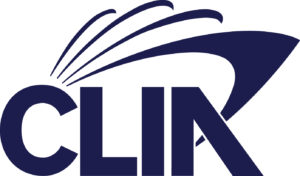 Cruise Lines International Association (CLIA) is the world’s largest cruise trade association, representing more than 90 percent of the world’s ocean-going cruise capacity, as well as 55,000 travel agents worldwide and 56 cruise lines, which serve nearly 30 million passengers annually. The organization supports policies and practices that promote a secure, healthy, and sustainable cruise ship environment.
Cruise Lines International Association (CLIA) is the world’s largest cruise trade association, representing more than 90 percent of the world’s ocean-going cruise capacity, as well as 55,000 travel agents worldwide and 56 cruise lines, which serve nearly 30 million passengers annually. The organization supports policies and practices that promote a secure, healthy, and sustainable cruise ship environment.
CLIA’s key focus areas are broken down into five pillars of responsible tourism: environmental sustainability, destination stewardship, public health and safety, economic impact, and workforce development. Over the last 20 months, of course, one issue has come to the forefront: public health and safety.
Cruising at a Standstill
Creating new protocols, collaborating with local and federal governments, and working with public health experts were all critical for CLIA when COVID-19 hit, said Bari Golin-Blaugrund, vice president of strategic communications and public affairs at CLIA.
In March 2020, the cruise industry came to a standstill in the U.S., which lasted more than a year. “Part of that was voluntary suspension and part of that were orders put in place by the Centers for Disease Control and Prevention (CDC) to prohibit cruise operations U.S. waters,” Golin-Blaugrund explained. These restrictions were designed to help mitigate the spread of the disease, when “the country was in the darkest days of the pandemic,” she added.
By March 2021, the situation with the pandemic had changed significantly but restrictions around cruising had not. “Despite the introduction of vaccines and the improving trend lines as it relates to the spread of the virus and where the country was headed, we were still in the same place as we were six months earlier,” Golin-Blaugrund said.
CLIA needed more clarity from the U.S. Government on a plan for reopening and when members might reasonably expect to begin sailing again. The industry’s sense of urgency wasn’t just to help people get back to vacationing — “not that that’s not important,” Golin-Blaugrund was quick to add. The cruise industry contributes $55 billion on an annual basis to the U.S. economy, supporting nearly half a million American jobs, and is a “huge economic driver for port communities throughout the U.S. who had been suffering for over a year without revenue from cruise tourism,” she said.
”It really was an all-hands-on-deck effort. We were able to maximize the tool’s ability to make change.
Bari Golin-BlaugrundVice president of strategic communications and public affairs, Cruise Lines International Association
Using Tech to Connect Members With Lawmakers
With the goal of working collaboratively with the Biden administration and the CDC to resume sailing by July 4, 2021, which was President Biden’s target date for a return to ‘closer to normal,’ CLIA launched its “Ready, Set, Sail” campaign in March 2021. CLIA used VoterVoice to enable members of the wider cruise community in the United States to reach their representatives via email and social media in support of the resumption of U.S. cruise operations.
“We wanted members of Congress to know that their constituents were paying attention to this issue and that we felt, collectively as a community, that it was time to start planning for the industry to get back to operating,” Golin-Blaugrund said. “There was a collective feeling: it’s time to start sharing our story, sharing the industry’s commitment to doing this the right way.”
CLIA chose VoterVoice to tackle this challenge because it was “incredibly user-friendly, and we wanted to make this as frictionless as possible” both on the user end and the back end, Golin-Blaugrund said. “Our members got involved — they started sharing the Action Center link with their own followers,” she said. “It really was an all-hands-on-deck effort. We were able to maximize the tool’s ability to make change.”
VoterVoice made it easy for members of the cruise community to take action. CLIA used the tool to send an initial call to action to its membership networks, asking Congress to help support the restart of cruise operations. Once members accessed the Action Center, pre-filled supporter information meant they could take action with one click. Within the first two days of the campaign, advocates sent nearly 10,000 messages to Congress.
VoterVoice allowed CLIA to very quickly “spark the awareness that we were looking for, especially on the Hill,” Golin-Blaugrund said. “Even with purely organic promotion, we were generating massive amounts of emails and social media posts.”
It’s hard to compete for attention on the Hill, particularly in the midst of a global crisis like the COVID-19 pandemic — “until a certain threshold [of messages] is reached,” Golin-Blaugrund said. “And we blew well, well past that threshold.” Emails from the cruise community reached every U.S. congressional office — all 100 U.S. senators and 435 members of the House of Representatives. “We were able to show that the cruise community touches every single part of the United States,” Golin-Blaugrund said.
Effecting Change for the Cruise Industry
By early June, more than 47,000 advocates had sent over 155,000 messages in support of cruise resumption to members of Congress — it was impossible for policymakers not to pay attention. In meetings with members of Congress and their staff, CLIA members kept hearing how much lawmakers “were hearing from their constituents on the topic,” according to Golin-Blaugrund.
CLIA’s campaign was able to cut through the noise and bring the organization’s position to the forefront for members of Congress. After the campaign launched, several “prominent voices on the Hill immediately released statements, letters, and quotes to the media about the importance of restarting the industry, so that helped keep the momentum going,” Golin-Blaugrund said.
With the sheer volume of emails being sent, change didn’t take long. “Within a month we really saw a change happen — a change in approach, a shift toward a more productive dialogue between the CDC and the industry,” Golin-Blaugrund said.
Members of Congress were now paying attention to the issue, with some even publicly encouraging the CDC to put forth a road map for cruising’s return. A month into the “Ready, Set, Sail” campaign, representatives from CLIA and the cruise lines began to see some light at the end of the tunnel. After more than six months since they last shared an update, the CDC released guidance for the cruise industry which was “incredibly helpful to start planning [its comeback],” Golin-Blaugrund said.
The first cruise ship resumed sailing on June 26, 2021, exceeding CLIA’s target date by more than a week. Since then, more than 100 cruise ships have returned to sailing in U.S. waters. Open dialogue with the CDC continues and regular information-sharing has kept everyone on the same page.
“The ‘Ready, Set, Sail’ campaign well exceeded anything that I could have imagined,” Golin-Blaugrund said. “There was broad appreciation for the fact that we launched the VoterVoice tool across our cruise line members, our travel agent members, the trade folks, people who are involved in operations — there was this overwhelming sense of ownership and unity.”
CLIA members expressed their appreciation for a simple, impactful way to get involved and make their voices heard. “Giving somebody an opportunity to participate in something like this was incredibly valuable and really reinforced the importance of community and working together to overcome challenges that once seemed insurmountable,” Golin-Blaugrund said.
”Giving somebody an opportunity to participate in something like this was incredibly valuable and really reinforced the importance of community and working together to overcome challenges that once seemed insurmountable.
Bari Golin-BlaugrundVice president of strategic communications and public affairs, Cruise Lines International Association
CLIA Embarks on a Journey Toward the Future of Cruising
The protocols implemented by the cruise industry have been successful in reducing the risk of COVID-19 amongst cruise passengers and crew, and the industry is even being seen as a model for other sectors of travel and tourism, according to Golin-Blaugrund. The CDC recently praised the cruise industry for the implementation, vigilance, and effectiveness of their new health and safety protocols.
“There was a point in time when a lot of people would say, ‘this industry has no chance of coming back,’” Golin-Blaugrund said. “We proved those voices wrong in a really big way.”
Almost all ships worldwide are projected to be operating again by spring 2022. With the cruise industry resuming operations, CLIA will continue to make health and safety a priority in the new year. “Cruisers trust our members to go above and beyond to help keep them healthy and safe,” Golin-Blaugrund said. “That’s one of the things that sets this industry apart, and we take great pride in that.”
CLIA will also continue to place a heavy emphasis on environmental sustainability as the cruise industry works toward its goal of achieving carbon-neutral cruising by 2050. And VoterVoice will continue to be at the center of that strategy. “VoterVoice could be a great way to build awareness among lawmakers for the initiatives the industry is taking on when it comes to environmental sustainability,” Golin-Blaugrund said.
Additionally, CLIA will remain engaged in local communities, where misinformation is often spread by “vocal anti-cruise activists.” VoterVoice will allow the organization to “work collaboratively with local communities, addressing concerns and reaching practical solutions to make sure we’re preserving the heritage and beauty of the destinations that we go to,” Golin-Blaugrund said.
Propel Change for Your Industry With VoterVoice
FiscalNote’s flagship advocacy suite, VoterVoice, is at the center of the CLIA’s advocacy strategy. From keeping supporters and stakeholders informed about the organization’s efforts and important updates on its issues, to firing up its base and mobilizing them to further its mission, VoterVoice is there every step of the way.
Ready to see for yourself?
See how our 360-degree approach to managing advocacy and policy issues can help you promote action, manage risk, as well as assess your impact and drive results.


